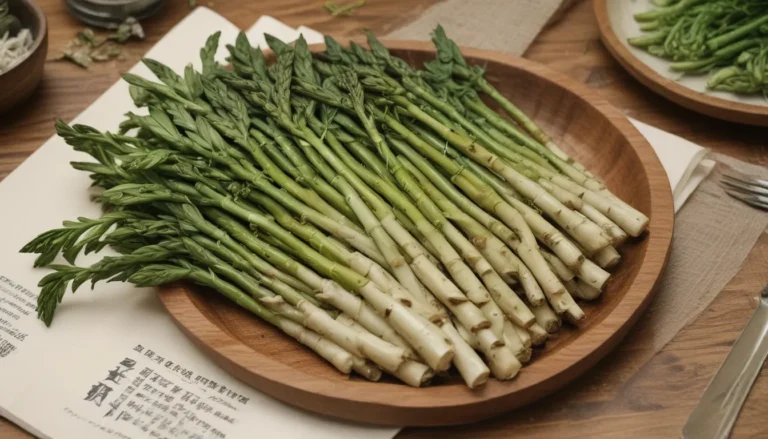The Healing Power of Lemon Balm Tea: A Comprehensive Guide

Are you looking to add a new herbal infusion to your daily routine? Lemon balm, also known as Melissa officinalis, is a versatile and beneficial plant that can elevate your tea experience. Whether you prefer a soothing warm cup of tea or a refreshing cold infusion, lemon balm has got you covered. In this article, we will explore the numerous benefits of lemon balm tea and provide you with step-by-step instructions on how to make the perfect infusion.
Understanding the Benefits of Lemon Balm
Before we dive into the tea-making process, let’s take a closer look at the medicinal properties of lemon balm. This aromatic plant is not only easy to grow but also offers a wide range of healing virtues. Here are some of the key benefits of incorporating lemon balm into your daily routine:
-
Nervine Properties: Lemon balm is known for its ability to assuage symptoms of mild depression and anxiety. It is considered a trophorestorative for the nervous system, helping to restore its function.
-
Heart Tonic: Referred to as “heart’s delight,” lemon balm provides support to the cardiovascular system, making it an excellent choice for those dealing with heart palpitations or high blood pressure.
-
Digestive Support: Lemon balm can help calm digestive tension, alleviate stress associated with digestive complaints, and ease bloating and gas. It is also effective in treating migraines associated with tension.
-
Sleep Aid: With its antispasmodic and nervine actions, lemon balm is recommended for managing insomnia. When combined with other sedative herbs like California poppy and passionflower, it can promote restful sleep.
-
Immune Booster: Lemon balm is antiviral and antimicrobial, making it an ideal remedy for warding off harmful bacteria, fungi, viruses, and protozoans. It provides valuable support for the immune system.
How to Make Lemon Balm Infusion
Now that you understand the myriad benefits of lemon balm, let’s explore how to make the perfect infusion. Whether you prefer a cold or hot infusion, lemon balm tea is a simple and delightful addition to your daily routine.
Cold Infusion Instructions
Creating a cold infusion with lemon balm is a refreshing way to enjoy its citrusy flavor while benefiting from its calming properties. Here’s how you can make a cold-infused lemon balm water:
- Gently rinse six to 10 sprigs of fresh lemon balm.
- Slap the herbs to release their aromatics.
- Place the herbs in a jar or container and pour in four cups of natural spring water.
- Close the container and refrigerate for at least four hours or up to overnight.
- Strain before serving, or leave the leaves in for added flavor.
Warm Infusion Instructions
If you prefer a warm cup of tea, here’s a simple guide to making a warm lemon balm infusion:
- Boil water for however many cups of tea you plan to make.
- Measure out two to three tablespoons of dried lemon balm or four to six grams of fresh herbs.
- Infuse the herbs in a heat-safe container with boiling water for 10 to 15 minutes.
- Add sweetener to taste and enjoy the warm tea.
By following these simple instructions, you can create a flavorful and soothing cup of lemon balm tea that complements your daily routine.
Experimenting with Herbal Blends
Once you have mastered the art of making lemon balm tea, you can experiment with adding complementary herbs and spices to create your own herbal blend. Whether you want to enhance the flavor or boost the medicinal properties of your tea, the possibilities are endless. Get creative and tailor your tea blends to suit your preferences and health needs.
In conclusion, lemon balm tea is a versatile and beneficial herbal infusion that can elevate your daily self-care routine. By incorporating this aromatic plant into your tea regimen, you can enjoy the numerous health benefits it offers while connecting with the healing power of nature. So why not brew yourself a cup of lemon balm tea today and savor its soothing and uplifting properties?
If you have any tips or experiences to share about working with lemon balm in your tea blends, feel free to leave a comment below. Your feedback and insights are always appreciated.
In addition to exploring the benefits of lemon balm tea, you may also be interested in learning more about other healing herbs and plants from the garden. Check out these related articles for further inspiration:
- Make a Soothing Herbal Tea for Coughs, Colds, and the Flu
- Combat Cold Season Naturally with Herbs and Plants from the Garden
- How to Dry Fresh Garden Herbs
Thank you for taking the time to learn about the healing power of lemon balm tea. We hope this comprehensive guide has inspired you to incorporate this versatile herb into your daily wellness routine. Stay tuned for more informative articles on herbal remedies and natural healing practices.
By implementing the information provided in this article, you can enhance your understanding of lemon balm tea and its benefits. Experiment with different herbal blends and infusions to create a personalized tea experience that suits your preferences and health needs.





